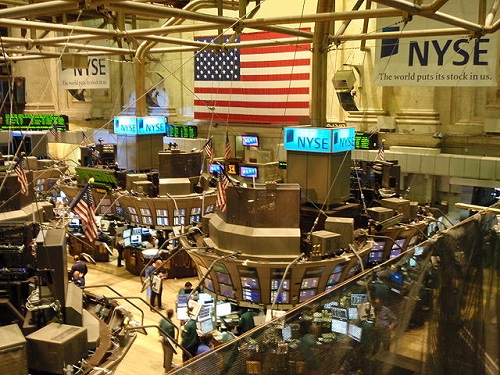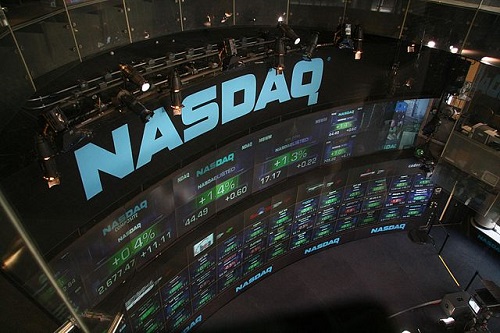Difference between NYSE and NASDAQ
Both NASDAQ and NYSE are known all over the world for providing high end platforms for trading stocks. These stock exchange markets have their fame drawn from the fact that most of the equities in North America trade on them. Companies going public have to make a choice on where they will want to list their stocks.
Brief History of the Two
NYSE is much older than NASDAQ and it was founded in the year of 1972. There are 24 brokers signed an agreement known as the Buttonwood Agreement, which meant they were to start selling and buying securities. Currently, NYSE is the largest stock exchange in the world. It has accrued massive listing of companies.
NASDAQ begun as the first stock exchange of the world to be run electronically. It has grown significantly since it was able to attract a lot of tech companies. The stock exchange was founded in the year 1971, and it boasts of a larger market share and a large trade volume compared to NYSE.
Key Differences
Trading Principles
The major difference between the two is in their principles of trading. NYSE is a market for auction, while NASDAQ performs as a market for dealers.
Trading in the NYSE is physical, where buyers and sellers compare the bid prices and as well ask prices for the shares they want to trade. When a person wishes to invest in buying stocks, they will first have to place an order to the floor broker (2). They can also make the order by entering it into the UTP (Universal Trading Platform.) A supervisor, who is not an employee of NYSE will supervise the trade of a given company, and act as a middleman for a smooth trading exchange between the buyer and the seller.
On the other hand, trade in NASDAQ takes a totally different direction in the way it is done. In NASDAQ, a dealer will facilitate the trade between a buyer and a seller. To make a trade, a call must be made to the dealer by the stock brokers. A trade can also be made by using the OES (Online Execution System) to make an order. The dealers will then enter a price in the system for both the selling and the buying. Trade is then finalized when the buyer’s and seller’s price is matched.
Market Listing
Both NYSE and NASDAQ have different requirements to be met initially, when companies want to be listed in the exchanges. The fees structures are also different.
For a company to enlist in NASDAQ, an application that meets the following minimum requirement must be met.
- At least 1.25 million shares that have been publically traded. The regular bid price for these shares must be at a minimum of $4
- The companies must have a minimum of 3 makers of the market for its stock.
- The minimum standards outlined by the government must be met.
- If the company has been in existence for more than 3 years, the pretax earnings must aggregate to more than $11 million. If the company has existed for two years only, the pretax earnings of the company must be at least $2.2 million. Companies that have not lasted for more than 1 year are not allowed in (2). Losses, or a minimum flow of less than $27.5 million for a space of 3 years will also disqualify a company from enlisting in the NASDAQ.
For listing in the NYSE, the interested company must first send a request containing a list of bylaws. It must also provide a minimum of 5 years of annual shareholder’s reports. The company should also present to the NYSE copies of the certificates of stock bonds. The 10-K form of that current year, and a schedule of stock distribution should also be provided.
The following minimum requirements must be met for the NYSE listing.
- At least a minimum 1.1 million shares issued to not less than 400 shareholders.
- The market value of the shares in trade should be at least $40 million. The minimum price for a share should be $4.
- Pretax earnings should be at least $10 million aggregate for the last 3 financial years. This should include a $2million aggregate for the most recent year.
Fees for Listing
A company must pay $50,000 to $75,000 for its stocks to list in NASDAQ. Annual fees range around $27,500. On the other hand, the fee for listing in the NYSE can go up to $250.000. The annual fee paid is relative and is mostly based on the number of shares traded, which ranges at $500,000.
Companies Listed
Companies that list in these two stock markets have been categorized, except recently when companies started to list indiscriminately. NASDAQ has enlisted tech companies such as Facebook, Google, Microsoft, Intel, and other technology entities (1). On the other hand, companies enlisted in the NYSE are in most cases, major corporates such as The Bank of America, Coca- Cola, Wal-Mart, and the renowned General Electric.
The Perceptions Invoked
NASDAQ is considered to be the market that mostly supports the high- tech exchange, and includes a lot of companies whose main frame is dealing with the internet and electronics (1). The stocks for such companies are thought to be more volatile or unstable, but they are also classified as growth oriented.
On the other hand the NYSE is thought to be a market for companies that are well established. Companies enlisting in the NYSE are thought to have stocks that are stable and well established.
Summary
| Topic | NASDAQ | NYSE |
| Definition | National Association of Securities Dealers Automated Quotations | New York Stock Exchange |
| Trading Principles | Trading is done electronically and through telecommunication. | Trading is done on a physical location on Wall Street, New York. |
| Type of the market | Dealer’s market | Auctioning market |
| Perception | It is thought to be the perfect market for selling high –tech stocks which are oriented to growth, but whose potential for volatility is high. | Stocks exchanged are more stable and of well established companies. |
Conclusion
The two entities are known all over the world as the best stock market and securities exchange centers. Most of the big companies in the world trade in these two securities exchanges. The reasons for trading in these two exchanges is that the potential for growth in revenue for companies is almost assured, since a lot of companies find the exchanges a sure platform for growth and expansion.
- Difference between Traditional Commerce and Ecommerce - February 16, 2018
- The Differences between Copay and Deductible - February 6, 2018
- Differences between Personal Property and Real Property - January 29, 2018
Search DifferenceBetween.net :
 Email This Post
: If you like this article or our site. Please spread the word. Share it with your friends/family.
Email This Post
: If you like this article or our site. Please spread the word. Share it with your friends/family.
1 Comment
Leave a Response
References :
[0]Blau, B., Van Ness, B. and Van Ness, R. (2009). Information in Short Selling: Comparing NASDAQ and the NYSE. SSRN Electronic Journal.
[1]Blau, B., Van Ness, B. and Van Ness, R. (2011). Information in short selling: Comparing Nasdaq and the NYSE. Review of Financial Economics, 20(1), pp.1-10.
[2]"Image Credit: https://en.wikipedia.org/wiki/File:NYSE127.jpg"
[3]"Image Credit: https://commons.wikimedia.org/wiki/File:NASDAQ_stock_market_display.jpg"




Off by 180 years on the Buttonwood Agreement. NBD